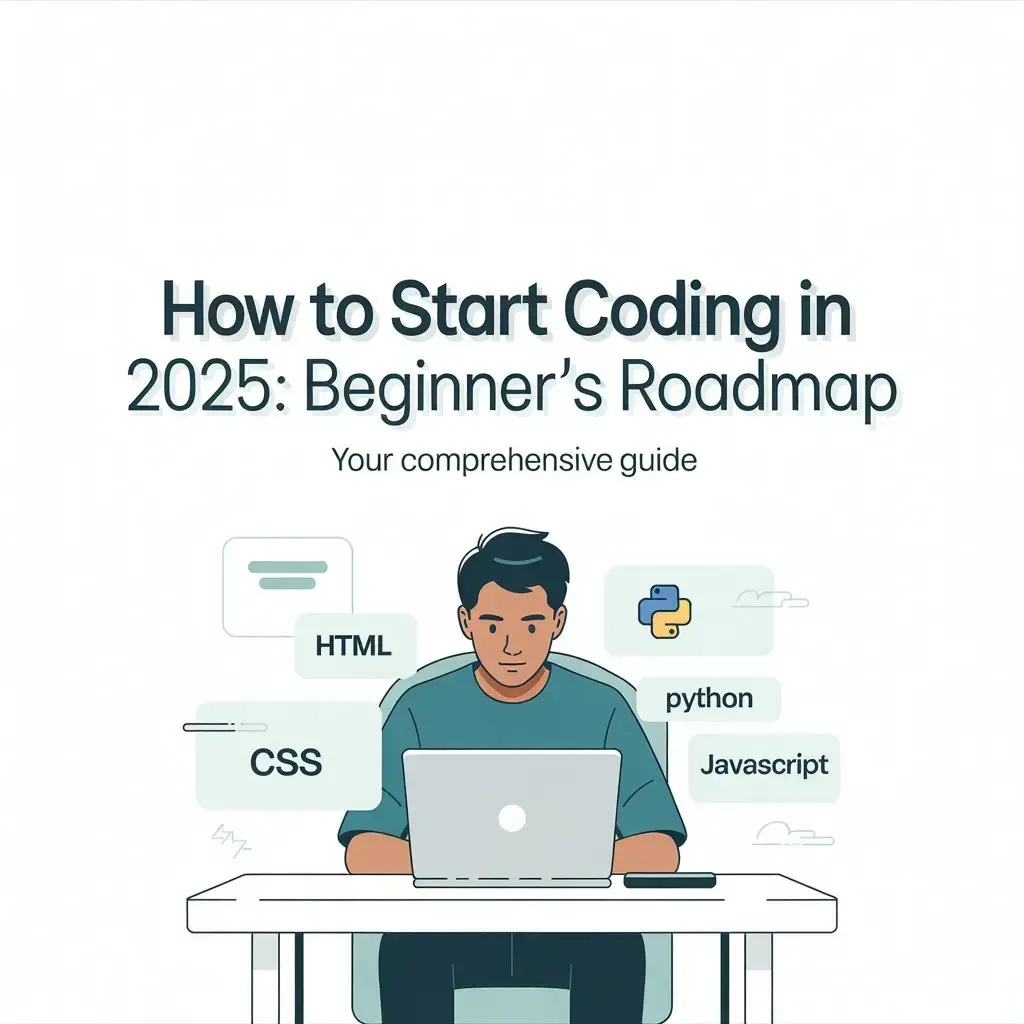Starting your journey into coding can feel overwhelming — but it doesn’t have to be. Whether you’re in school, college, or exploring a career switch, this 2025 roadmap will give you a crystal-clear path to becoming a developer — step by step.
Step 1: Understand What Coding Actually Is
Coding is the process of giving instructions to a computer to perform tasks. These instructions are written in programming languages like Python, JavaScript, or C++.
Think of it like giving commands to a robot in its own language.
Step 2: Choose the Right Language to Start With
There’s no “one right” language, but here are great choices depending on your goal:
| Goal | Language |
|---|---|
| Web Development | HTML, CSS, JavaScript |
| Data Science / AI | Python |
| App Development (Android) | Kotlin / Java |
| Competitive Programming | C++ / Python |
| Backend Development | Python / Node.js |
Recommended: Start with Python or JavaScript – they’re beginner-friendly, in-demand, and versatile.
Step 3: Set Up Your Coding Environment
You need just 2 tools to begin:
- Code Editor: Install Visual Studio Code (VS Code) – it’s lightweight and perfect for beginners.
- Browser: Use Chrome or Firefox to test your web-based projects.
You don’t need a powerful PC. Even a basic laptop is enough to start.
Step 4: Learn the Basics (Core Concepts)
Start with these foundations:
- Variables and Data Types
- Conditions (if-else)
- Loops (for, while)
- Functions
- Arrays / Lists
- Basic Input/Output
Use beginner courses on:
Step 5: Build Small Projects (Start Creating)
Apply what you learn immediately.
Here are a few beginner project ideas:
- Calculator
- To-Do List
- Digital Clock
- Weather App (using API)
- Portfolio Website
You’ll learn 3x faster by building things instead of just watching tutorials.
Step 6: Pick a Direction (Your Specialization)
After 1–2 months of basics, choose one direction:
- Frontend Developer (HTML, CSS, JavaScript, React)
- Backend Developer (Node.js, Python, Databases)
- AI/ML Developer (Python, Numpy, Pandas, TensorFlow)
- Game Developer (C#, Unity or JavaScript)
- App Developer (Java/Kotlin for Android, Swift for iOS)
Each has a different learning path and tools. Follow one roadmap at a time.
Step 7: Use Git & GitHub
Start using Git for version control and GitHub to showcase your projects.
Why it matters:
- You build a public portfolio
- You can collaborate with other developers
- Employers often check your GitHub before hiring
Learn: git init, git add, git commit, git push
Step 8: Practice, Practice, Practice Use platforms like:
- LeetCode – for coding challenges
- HackerRank
- Codeforces – for competitive programming
Try to solve 2–3 problems a day. Your logic and confidence will grow rapidly.
Step 9: Build a Portfolio & Resume
Create a simple portfolio website showing:
- About You
- Skills
- Projects (with live links)
- GitHub/LinkedIn
Make sure your resume highlights your coding skills and includes GitHub links.
Step 10: Stay Consistent (The Real Secret)
Coding isn’t about talent. It’s about consistency.
- Code daily or at least 5 days a week
- Don’t aim for perfection — aim for progress
- Surround yourself with other learners on YouTube, Discord, or Reddit
You can Join my Coding Community on Telegram
Final Words
2025 is the best time to become a coder — with AI tools like ChatGPT, GitHub Copilot, and access to free resources, nothing is stopping you.
Start today. Build something small. Learn every day.
Your future self will thank you.
👉 For more free coding tutorials, visit DeveloperShaurya.com and subscribe to my YouTube channel DeveloperShaurya.
Read my other blogs
- Top 5 Mistakes Beginners Make While Learning to Code (And How to Avoid Them)
- Best Programming Languages to Learn in 2025 (and Why)
- Before You Learn Web Development: The Advice No One Gave Me
- How to Start Coding in 2025: Beginner’s Roadmap
- Why Coding is Important: The Language of the Future
- Are Coding and Programming the Same? – The Complete Truth You Need to Know
- Will Coding Be Replaced by AI?
- C++ Programming: Everything You Need to Know
